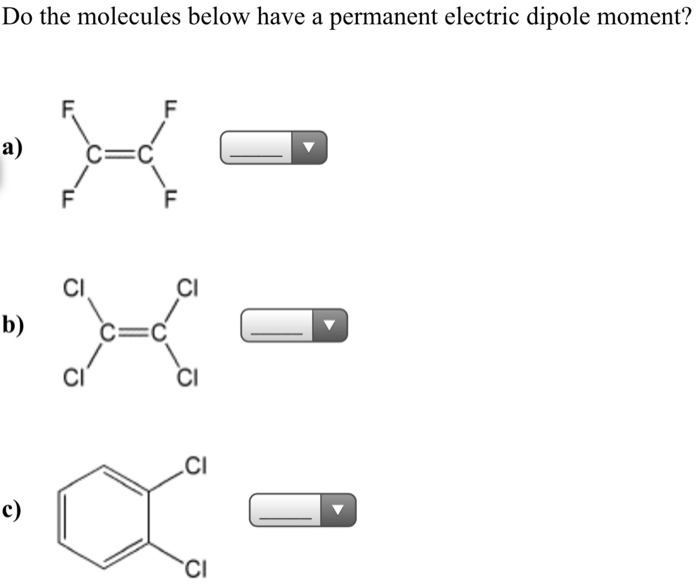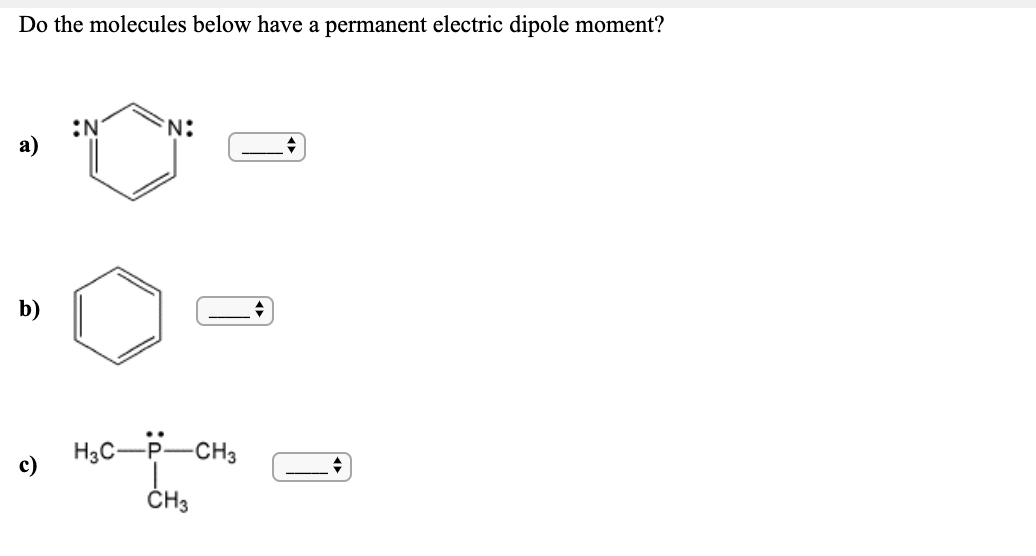
‘Guess’: Use a bond guessing algorithm based on the system’s geometry. Note: the calculation may stop if the engine cannot compute bond orders. The specific method used to compute the bond orders depends on the engine selected, and it may be configurable in the engine’s input. ‘Engine’: let the engine compute the bond orders.
#CLICK ON THOSE MOLECULES BELOW WHICH HAVE A DIPOLE MOMENT. HOW TO#
How to compute the bond orders when they are requested via the ‘Properties%BondOrders’ key. You can request bond orders to be calculated in the Properties input block: To guess bonds) uses inter-atomic distances and atomic valences to guess the bond The bond guessing algorithm (which is also used by the graphical user interface If bond orders are requested but the engine does not implement a method forĭetermining bond orders, a bond guessing algorithm will be used instead (see We refer users to the manuals of the respective engine For engines based onįorce fields, these might just be the bond orders used internally by the forceįield, while for quantum mechanical engines the bond orders are usuallyĭetermined by analyzing the results of the quantum mechanical calculation, e.g. Many engines can determine bond orders between atoms. Requests the engine to calculate the polarizability tensor of the system. This can only be requested for non-periodic systems. Requests the engine to calculate the nuclear gradients of the electric dipole moment of the molecule.


Requests the engine to calculate the electric dipole moment of the molecule. Requests the engine to calculate the atomic charges.


 0 kommentar(er)
0 kommentar(er)
